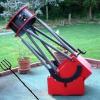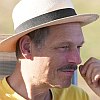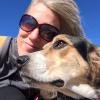Let me start by saying that ALL CREDIT WILL BE GIVEN FOR WORK SUBMITTED!
I'm looking for sample drawings and logfiles for various object's to make a complete program about "Keeping logs and records of observing sessions".
Not any item specifically, but what I would like are sample sketches of various TYPES of items.
- Planets
- Clusters (Open and Globs)
- Nebula
- Galaxies
- Solar (Spots, proms, flares, etc...)
- Lunar (Closeups, widefields, etc...)
And with the images, an accompanying log entry would be nice...
- Scope
- Date/time
- EP used (Magnification)
- Conditions (Seeing, Transparency)
- General Notes
Along with this, some "Tips" for beginners (like me). The sketches can be "Beginner" or even higher level (very artistic as some I've seen here). Perhaps even an old and new of the same objects to show how one can progress and get better as they go.
I'm hoping to put together a program about 30-45 minutes long on a Powerpoint presentation. So as much info as I could get to fill it in would be highly appreciated!
And again - ALL CREDIT WILL BE GIVEN for contributions! I will even send contributors a copy of the presentation.
So, who's willing to help out a fellow astronomer and "Student" sketcher achieve these goals?
Thank you in advance!
































